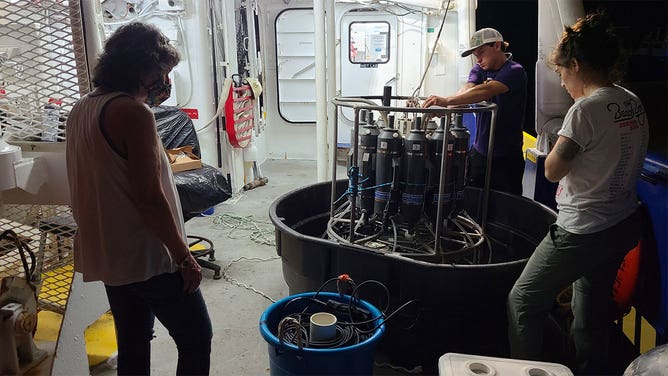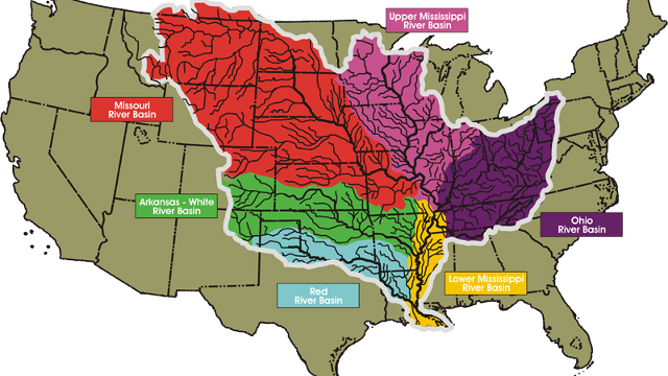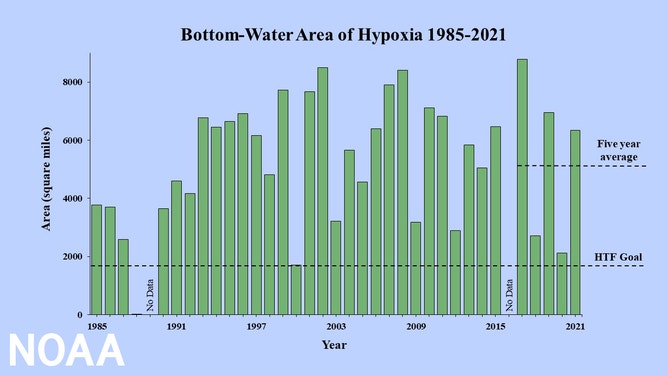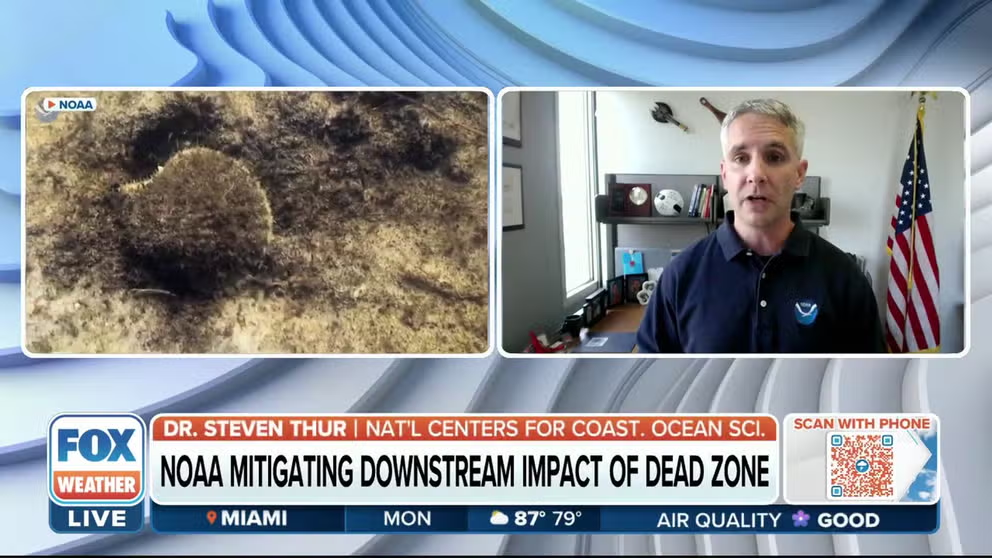What is the Gulf of Mexico 'dead zone'?
This hypoxia zone is the second-largest of its kind in the world
Gulf of Mexico 'dead zone' measures below-average
Dr. Steven Thur, Director of the National Centers for Coastal Ocean Science for NOAA, talks about the Gulf of Mexico "dead zone."
Each year, a large area in the Gulf of Mexico close to some shores becomes so deprived of oxygen that it makes it hard for certain types of sea life to exist. This area has become known as the "dead zone."
Nancy Rabalais, a professor at Louisiana State University, has been studying the zone for decades and was the principal investigator on a 2021 research mission aimed at surveying it.
"We've been doing this since 1985, and we have a 35-year record of these cruises," Rabalais said. "There were only two years in which we did not complete the full mapping."

Researchers aboard a ship in the Gulf of Mexico in 2021 work to complete the annual survey of a hypoxia zone in the northern Gulf.
(LSU/NOAA)
Rabalais said the mission included a ship that sailed along a series of stations that stretch from the mouth of the Mississippi River to Texas.
"We work 24 hours a day," Rabalais said. "We have two shifts that work 12 hours, and we go station to station, with our instruments and water collectors and determine the bottom oxygen and basically map the area."
What is a hypoxia zone?
The technical name for this so-called "dead zone" is hypoxia. According to Rabalais, a zone is considered hypoxic if oxygen levels drop below 2 milligrams per liter. At those levels, it’s hard for most sea life to survive.
"That's our definition, and it's used by many other people around the world," Rabalais said.
Rabalais said some of these oxygen-minimum zones are naturally occurring phenomena, but it’s the human-caused ones near coastlines that are of particular interest to scientists since they have such a large impact on marine life.
‘Dead zone’ is a misnomer
Rabalais said the hypoxia area in the Gulf of Mexico has become known as a "dead zone" by trawlers, boats that use nets to drag the seafloor because they don’t catch anything. That’s because the low-oxygen environment is generally limited to the lower depths. Things that live closer to the surface aren’t usually affected by the hypoxic area.
"The word ‘dead zone’ is not completely accurate because fish can live in the upper water column, and there are bacteria that just thrive in low oxygen environments," Rabalais said.
Rabalais also said that some species will swim away from the area when oxygen levels begin to drop, but others can’t leave, which spells trouble for them.
"There are other organisms – burrowing crabs, eels, snails, clams, worms – that live in the sediments that cannot swim out of the way, and those organisms will die off or become less numerous if the oxygen stays low long enough," Rabalais said.
What causes it?
According to Rabalais, coastal areas with high freshwater input are particularly susceptible to hypoxia because of all the runoff from farms and cities that finds its way into rivers that then empty into the ocean.
According to the National Oceanic and Atmospheric Administration, that water contains high levels of nitrogen and phosphorus, which promotes algae growth where it empties into the ocean. As the algae die, they sink to the ocean floor, where oxygen-consuming bacteria break it down. These bacteria suck up much of the available oxygen and prevent other organisms from using it.
"The U.S. Geological Survey has done a study of the sources of nitrogen and phosphorus that go into the Mississippi River streams in the main river," Rabalais said. "So, they find that most of the nitrogen comes from agricultural activities, 70% row crops and other crops. Some of it comes from pastureland. About 10% comes from cities, and a small portion comes from atmospheric deposition, from the burning of fossil fuel and also the volatilization of animal manure and fertilizer."

The Mississippi River Basin is divided into six sub-basins outlined in this map.
(LSU/NOAA)
Rabalais said cities likely generate more phosphorous than the land because the runoff from cities contains human wastewater.
According to Rabalais, the Gulf of Mexico "dead zone" begins to ramp up in April and sticks around through October. It normally peaks in July.
Gulf of Mexico ‘dead zone’ is one of the largest in the world
The hypoxia zone in the Gulf of Mexico is the second-largest human-caused low-oxygen zone in the world, according to Rabalais. The largest such area is in the Baltic Sea.
In 2021, Rabalais’ research team found the Gulf of Mexico "dead zone" covered 6,334 square miles of coastal waters from the Mississippi River to west of Galveston Bay, in Texas. That was larger than the 5-year average of 5,380 square miles and much larger than the 4,880 square miles that were forecast by the National Oceanic and Atmospheric Administration to be hypoxic this year.

Long-term measured size of the hypoxic zone (green bars) measured during the ship surveys since 1985, including the target goal established by the Mississippi River/Gulf of Mexico Watershed Nutrient Task Force and the 5-year average measured size (black dashed lines).
(LUMCON/NOAA)
"I went looking around, and the combined areas of Lake Ontario and Lake Erie, if you can imagine that, that's the size of the low-oxygen area this summer," Rabalais said.
This particular hypoxia zone has been around since at least the 1960s or early 1970s, according to Rabalais.
"We don't have data that go back that far, but we do look for indicators of low oxygen or high phytoplankton productivity in sediment cores, and you can see the change over time, and it's gotten worse," Rabalais said.
What’s being done
The Hypoxia Task Force, a consortium of agencies from states that sit along the Mississippi River and federal agencies, is working to develop strategies to control nitrogen and phosphorous levels throughout the river’s watershed. The group has also set a goal of reducing the hypoxia zone to just under 2,000 square miles by 2035.
NOAA is also working to create the Runoff Risk Forecast. Its goal is to reduce the amount of fertilizer in the runoff by giving farmers better information about when it’s the best time to fertilize their crops, allowing it to stay in the fields instead of being washed away.
